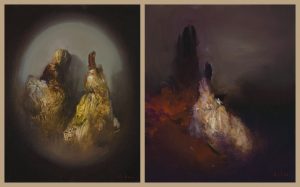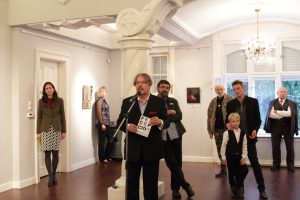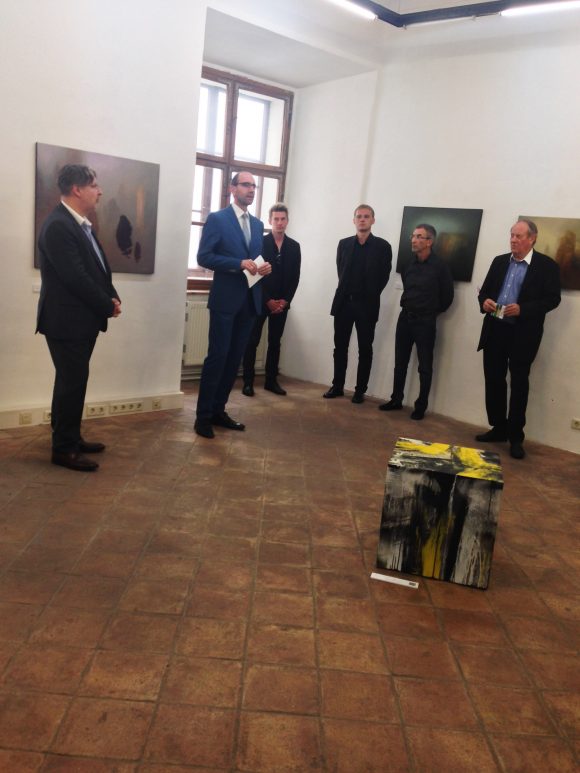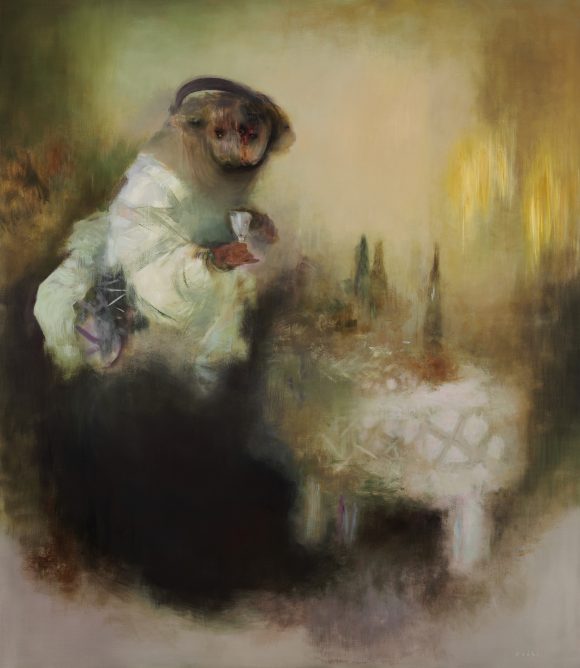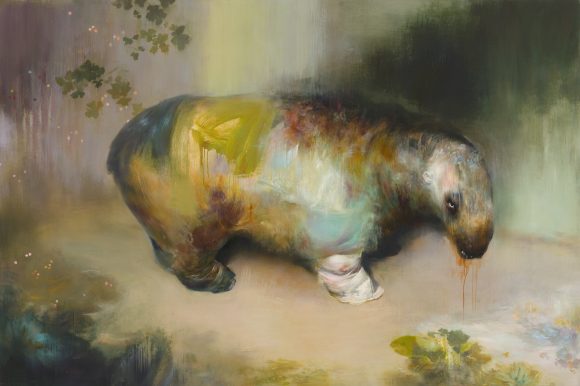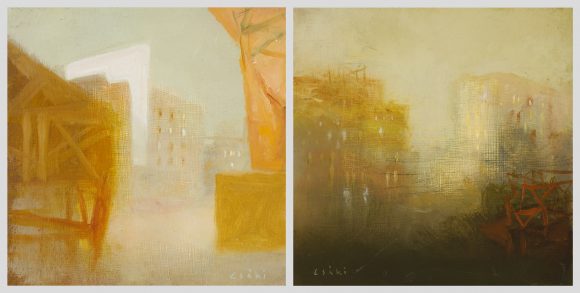„Garde Dame” and „Evening Rendezvous” by Róbert Csáki fold a gentle narrative, as if they were scenes following eachother in a novel. There are two women on „Garde Dame”, a well-to-do lady and her companion rolled herself up in dark linen. Wrinkles of their clothes in the strong daylight semm like as their material was paper. The women turning their back on us may have a secret, quiet chat with eachother. On „Evening Rendezvous” guarding eyes of the garde dame are not on young lady in white anymore. We meet her in the lights of the early evening again, while she’s sitting in a garden, possibly waiting for somebody. Her white dress, just as her environment is coloured by the twilight. Her face stays hidden again. But not only through the figures can we discover the similarity between the two paintings. Róbert Csáki painted silence into both picture’s atmosphere, in a different way, generating different moods. The „Garde Dame” emanates the calmness of an everyday scene, while „Evening Rendezvous” thickens the tense muteness, the lonley minutes of waiting into the picture. The variant aspects of these situations are obvious through the usage of colours and imaging of lights. Above all, on both paintings, there is a presence of an invisible person, who is observing the figures secretly, behind their backs. The real mystery smouldering in the shade of „Garde Dame” and „Evening Rendezvous” is who we think that person is…
Garde-Dame (45x35cm, oil on canvas, 2014)
Evening Rendezvous (35x30cm, oil on canvas, 2014)
photo: Mihály Borsos (misi)
written by: Zsófi Máté

